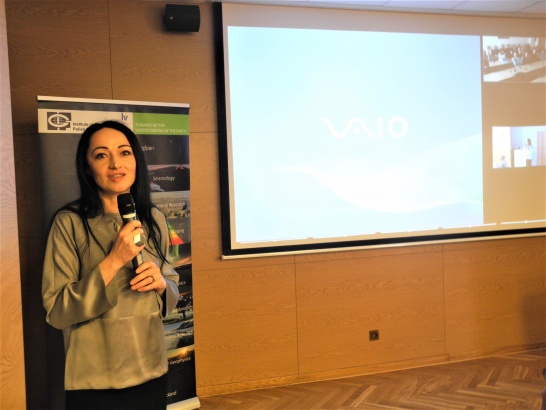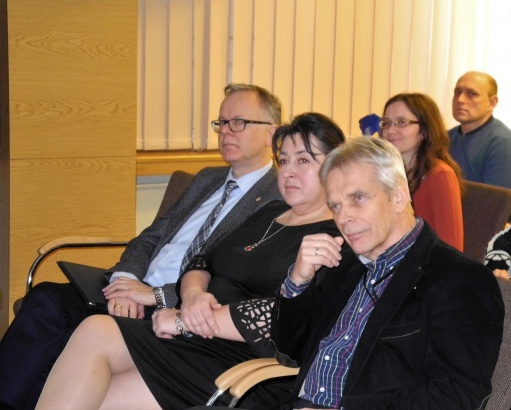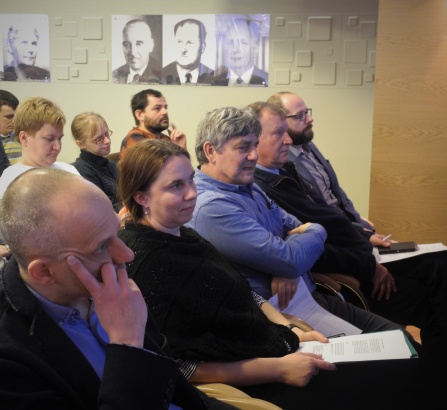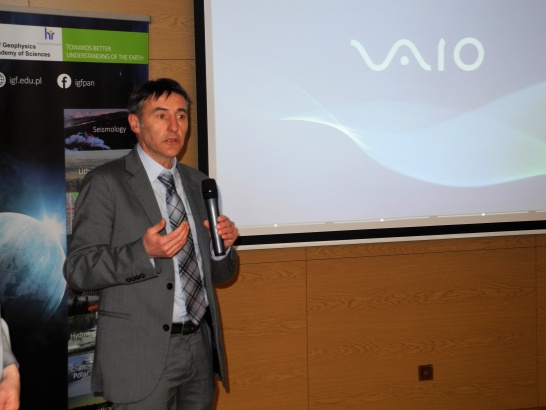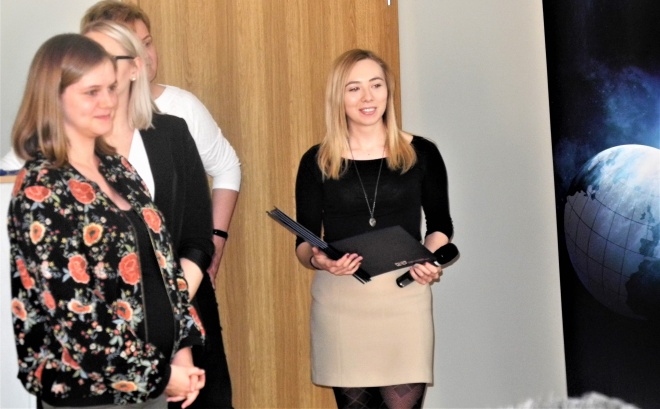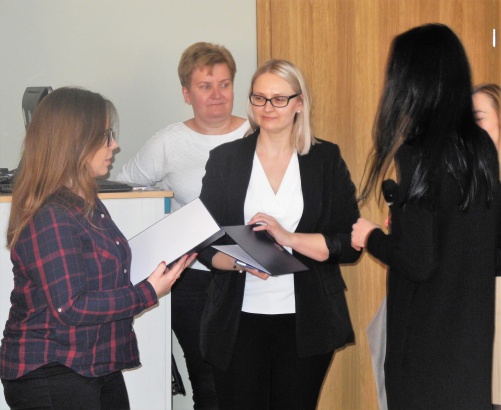Największe osiągnięcia naukowe 2018 zaprezentowane podczas sesji sprawozdawczej
W tym roku najlepsze wystąpienia miały szansę na nagrodę publiczności.
Wśród zaproszonych gości znależli się m.in. prof. Paweł Rowiński-wiceprezes PAN oraz prof. Paolo Papale z instytutu IMGV z Włoch.
Tradycyjnie pani Dyrektor prof. Beata Orlecka-Sikora wręczyła nagrody za ponadprzęciętną i wyróżniającą się działalność publikacyjną w 2018 roku. W tym roku w gronie laureatów znaleźli się: prof. Zbigniew Czechowski, prof. Krzysztof Mizerski, dr hab. Adam Piotrowski, dr Magdalena Mrokowska i dr Mateusz Moskalik. Głosami publiczności nagrody za najlepsze prezentacje osiągnieć naukowych w 2018 roku powędrowały do dr inż. Anny Łobody i dr inż. Marii Kozłowskiej.
Wystąpienia i prelegenci
- Department of Magnetism
- Mgr D. Niezabitowska: Magnetic properties of Lower Paleozoic gas-bearing shale rocks from Northern Poland
- Dr K. Michalski: Paleomagnetic studies of paleogeography and mountain building processes (Svalbard, Carpathians and Southern Africa)
- Dr S. Dytłow: Magnetic methods in study of environmental pollution
- Dr M. Grądzki: Field-induced instabilities of the Solar tachocline
- Mgr inż. Oryński: 3-D Modeling of Magnetotelluric Data. Case study form Western Poland
- Dr A. Neska: Observations of Earth magnetic field and contribution of IG PAS to monitoring of plasmasphere
- Department of Atmospheric Physics
- Prof. J. Krzyścin: UV radiation modelling and observations for the purpose of public health (NA1)
- Dr hab. J. Jarosławski: Air quality studies in the Department in 2018 (NA1)
- Dr M. Kubicki: The impact of cloud and magnetospheric generator on the Global Electric Circuit (GEC)- overview (NA3)
- Dr hab. A. Pietruczuk, Changes of aerosols optical properties and particulate matter air
- Dr I. Pawlak: Monitoring of selected atmospheric variables in IGF PAS observatories in Poland and at Hornsund” (NO1.4)
- Department of Lithospheric Research
- Dr hab.P. Środa: Anisotropy of the upper mantle beneath Sudetes - passive seismic project AniMaLS
- Dr hab.P. Środa: Structure of the East European Craton and its contact with Alpides - cooperation with Institute of Geophysics NASU, Ukraine (GEORIFT 2013 i RomUkrSeis Projects)
- Mgr inż. D. Wójcik: Deep Seismic Project TTZ-South
- Dr hab. W. Czuba: Knipovich Ridge Seismic Experiments KNIPAS & KNIPSEIS (NSL2)
- Department of Hydrology and Hydrodynamics
- Dr inż. A. Łoboda: Flow-biota-sediment interactions
- Dr. inż. M. Kalinowska: Modelling of the velocity profile in a rectangular channel partly covered by vegetation
- Dr inż. M. Mrokowska: Particle settling dynamics and gravity flows - laboratory studies on transport processes
- Dr hab. inż. M. Osuch: Hydrology of a small permafrost catchment
- Dr hab. A. Piotrowski: Metaheuristics and neural networks in hydrology
- Department of Theoretical Geophysics
- Prof. Z. Czechowski: Time series modeling and analysis – new methods
- Dr hab. W. Bielski: Plane flow through the porous medium with chessboard-like distribution of permeability
- Dr K. Teisseyre: Measurements of the rotational components of the seismic field at Książ
- Prof. W. Dębski: DEM simulations of various geophysical processes
- Dr hab. P. Senatorski: Modeling seismicity of subduction zones
- Department of Polar and Marine Research
- Dr B. Luks: Snow research at IG PAS
- Dr A. Nawrot: Glaciers as an ecosystem
- Dr M. Moskalik: The impact of the sea ice conditions in the nearshore zone and shore ice on the wave propagation and coastal morphodynamics in polar regions on the example of south-western Spitsbergen – the analysis of processes, modeling, and prediction.
- Dr T. Wawrzyniak: The influence of permafrost degradation on runoff generation in arctic unglaciated catchment
- Prof. M. Lewandowski: Dust over Svalbard: does archipelago kill own glaciers?
- Department of Seismology
- Prof. S. Lasocki: High injection rates counteract formation of far-extending fluid migration pathways
- Dr hab. B. Orlecka – Sikora: Tracking the growth of the injection-induced fracture networks
- Dr M. Kozłowska: Studying aftershocks in mining induced seismicity
- Dr Ł. Rudziński: Rapid ground deformation corresponding to a mining-induced seismic event followed by a massive collapse
- Dr hab. G. Lizurek: Seismicity induced by water reservoirs
- Dr inż. K. Leptokaropoulos: A summary of the advances in injection-induced seismicity obtained within SHEER project.
- Department of Geophysical Imaging
- Mgr inż. M. Cyz: The organizational success of the SEISMIX 2018 conference
- Mgr inż. M. Cyz: Seismic characterization of unconventional resources: case study for Lower Paleozoic shales in N Poland
- Dr hab. M. Majdański: Near-surface geophysics in permafrost characterisation and other applications
- Mgr B. Singh: COst-effective Geophysical Imaging Techniques for supporting Ongoing MINeral exploration in Europe
- Dr hab. M. Białecki: Modeling of geophysical phenomena as complex systems
- Dr hab. inż. M. Malinowski: What we learnt from the PolandSPAN project?




